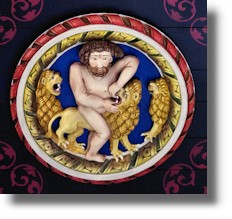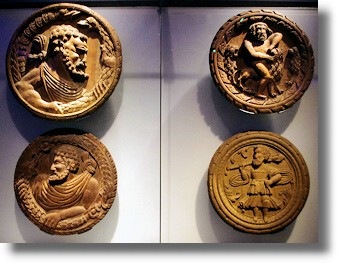Places to Visit in Scotland
- Stirling Heads, Stirling Castle
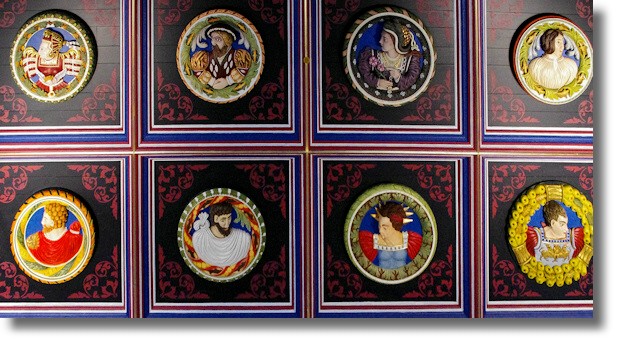
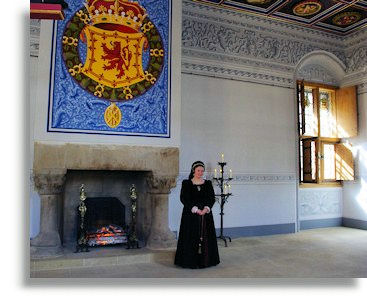
Background
Stirling Palace has always been a very popular tourist destination. Like Edinburgh Castle, it stands on top of the remains of a volcanic plug and the site has been home to a Royal castle since at least 1110. It played an important part in the Wars of Independence in the 14th century. It was the key factor in King Edward I of England's incursion into Scotland that ended in the victory by the Scottish army led by King Robert the Bruce at the Battle of Bannockburn in 1314 - not far from Stirling Castle itself. In the 16th century, King James V built a new Palace building within the defences of the castle. It was created not just for his new wife and queen, Mary of Guise, but as a statement to other European monarchs that the king was on a par with the greatest of European rulers. It became one of the most innovative pieces of Renaissance architecture in Britain, with exuberant façades overlooking an internal and external courtyard and with a covered bridge linking the palace to the Great Hall of the castle. Historic Scotland has been undertaking major renovation work over the last few years in Stirling Castle and in 2011 the Royal Palace re-opened with the Palace apartments looking as splendid as they had done in the 16th century. In addition to displaying a series of recreated tapestries on the wall of the Queen's inner hall in the palace, the refurbishment focused on the "Stirling Heads" - a collection of carved heads which once adorned the ceiling in the King's inner hall (See illustrations at the top of this pge and below).
It is likely, however, that James never saw the completed ceiling before he died (in Falkland Palace) in 1542.
The Heads survived in situ until the ceiling collapsed around 1777 after years of neglect at Stirling Castle. They were then dispersed among a variety of people and it is thought that about ten disappeared without record; two were destroyed by fire in Dunstaffnage Castle in Argyll. Fortunately, the wife of the deputy governor of the castle published a book of engravings illustrating most of the carvings. Later, most of the Heads were collected by the Smith Art Gallery and Museum in Stirling before being returned to the castle.The Head shown here is that of Hercules, the Roman mythological hero.
Ceiling, King's Inner Chamber
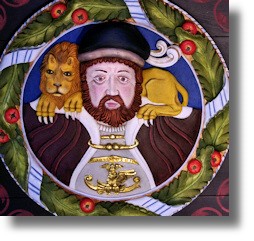
The Stirling Heads were commissioned by King James V around 1540 to decorate the ceiling of his Inner Hall.
In addition to being decorative, the Stirling Heads were designed to display a number of messages that James wished to convey - including his aspiration for Scotland to be part of the mainstream of European politics. Hence the inclusion of Charles V, Holy Roman Emperor and the most powerful Catholic ruler in Europe and his uncle, King Henry VIII of England (see graphic on the left). The Stewart line of succession is also illustrated with portraits of King James I and James IV and his mother, Margaret Tudor, sister of Henry VIII (seen here on the right). James wanted to bask in the reflected glory of such characters as that of the great Roman emperors and Hercules. Also included in the Heads are portraits of his glittering court, so noblemen and noblewomen, dressed in fashionable clothes of the day, are also included.
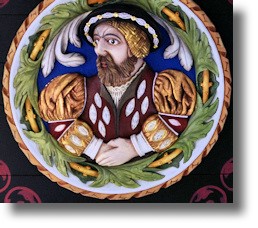
The collection of carved heads also celebrated James's marriage with Mary of Guise (see graphic on the right) placed beside that of James V himself (graphic on the left). Also featured are "putti" or cherubs, borrowed from the art of Renaissance Italy. Some of the Heads are reminders of the significance of Royal entertainments and so a poet, and a lady in a masquing costume are included as well as a King's jester of course. Recent research has suggested that one of the Heads (of a female "worthy" or courtier) has a harp tune carved round the border in a long forgotten musical notation. The experts have deciphered the notes and the tune has been digitally recorded - nearly 500 years after it had been created.
Historic Scotland specialists who examined the surviving heads in great detail uncovered the residue of paint on them and although they do not know which colours were used for each one, have used their imagination and records of the sorts of clothing that would be worn in the 16th century to recreate a most colourful ceiling.
"Image Makers for the King" Exhibition
The upper floor of the Princes Tower beside the palace itself is now given over to the Stirling Heads Gallery exploring court life during the reign of Mary and his queen. The Princes Tower was built around 1500 and was traditionally the nursery of Scotland's monarchs thereafter. It was cold and damp there and Mary Queen of Scots complained that her son, later King James VI of Scotland (and James I of England) was "in danger of catching rheumatism".There is an exhibition in the tower of the surviving Stirling Heads as well as unpainted duplicates of the replicas that were made for the ceiling in the Palace below, with a plentiful supply of information plaques.
It is likely that a team of local craftsmen created the original portraits and their borders, under the leadership of a French carver, Andrew Mansioun. They were carved in the Renaissance style which had arrived in France from northern Italy and was introduced to James's court by French craftsmen at the time of his marriage to Mary of Guise who, although not belonging to any of the Royal houses of Europe, was a a member of an aristocratic French family.
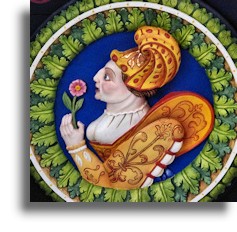
Further Information
You can see pictures of all the Stirling Heads in the castle in a Web page Slide Show and in a YouTube Slide Show.
